1. Metrics
1.1. Examples
1.1.1. mean time to recovery
1.1.1.1. time it takes to restore service
1.1.2. happiness index
1.1.3. flow efficiency
1.1.4. discard rate
1.1.5. lead time
1.1.6. cycle time
1.1.7. overtime hours
1.1.8. release frequency
1.1.9. change fail rate
1.1.10. ...
1.2. Quality Trend
1.2.1. Example from BT Claims
1.2.1.1. http://confluence.int.corp.sun/confluence/display/ALP/TS+Mentor+Notes?preview=%2F201963512%2F204970980%2FCopy+of+Quality+Calculator+v5.xlsx
2. Quotes (to keep in perspective)
2.1. "For every metric, there should be another 'paired metric' that addresses the negative consequences of the first metric" Andy Grove (heard during a talk by Mark Richards at Agile Australia).
2.2. "Every measure becomes a target"
2.3. "When a measure becomes a target, it ceases to be a good measure" - Goodhart's law
3. Tony's assignment page
3.1. http://confluence.int.corp.sun/confluence/display/ALP/Squad+Metrics+and+Reports
4. Reports
4.1. Confluence
4.1.1. Iteration Status Report
4.1.1.1. example
4.1.1.1.1. http://confluence.int.corp.sun/confluence/pages/viewpage.action?pageId=202257241
4.2. Powerpoint
4.2.1. Iteration Status Report
4.2.1.1. std template
4.2.1.1.1. http://info.int.corp.sun/sbs/Agile/Documents/Examples/Iteration%20Report/Templates/Iteration%20Report%20Template.pptx
4.3. Excel
4.3.1. release burnup
4.3.2. risk burndown
5. Charts
5.1. Jira
5.1.1. Agile
5.1.1.1. Burndown Chart
5.1.1.1.1. Track the total work remaining and project the likelihood of achieving the sprint goal. This helps your team manage its progress and respond accordingly.
5.1.1.2. Sprint Report
5.1.1.2.1. Understand the work completed or pushed back to the backlog in each sprint. This helps you determine if your team is overcommitting or if there is excessive scope creep.
5.1.1.3. Velocity Chart
5.1.1.3.1. Track the amount of work completed from sprint to sprint. This helps you determine your team's velocity and estimate the work your team can realistically achieve in future sprints.
5.1.1.4. Cumulative Flow Diagram
5.1.1.4.1. Shows the statuses of issues over time. This helps you identify potential bottlenecks that need to be investigated.
5.1.1.5. Version Report
5.1.1.5.1. Track the projected release date for a version. This helps you monitor whether the version will release on time, so you can take action if work is falling behind.
5.1.1.6. Epic Report
5.1.1.6.1. Understand the progress towards completing an epic over time. This helps you manage your team's progress by tracking the remaining incomplete/unestimated work.
5.1.1.7. Control Chart
5.1.1.7.1. Shows the cycle time for your product, version or sprint. This helps you identify whether data from the current process can be used to determine future performance.
5.1.1.8. Epic Burndown
5.1.1.8.1. Track the projected number of sprints required to complete the epic (optimized for Scrum). This helps you monitor whether the epic will release on time, so you can take action if work is falling behind.
5.1.1.9. Release Burndown
5.1.1.9.1. Track the projected release date for a version (optimized for Scrum). This helps you monitor whether the version will release on time, so you can take action if work is falling behind.
5.1.2. Issue analysis
5.1.2.1. Average Age Report
5.1.2.1.1. Shows the average age of unresolved issues for a project or filter. This helps you see whether your backlog is being kept up to date.
5.1.2.2. Created vs Resolved Issues Report
5.1.2.2.1. Maps created issues versus resolved issues over a period of time. This can help you understand whether your overall backlog is growing or shrinking.
5.1.2.3. Pie Chart Report
5.1.2.3.1. Shows a pie chart of issues for a project/filter grouped by a specified field. This helps you see the breakdown of a set of issues, at a glance.
5.1.2.4. Recently Created Issues Report
5.1.2.4.1. Shows the number of issues created over a period of time for a project/filter, and how many were resolved. This helps you understand if your team is keeping up with incoming work.
5.1.2.5. Resolution Time Report
5.1.2.5.1. Shows the length of time taken to resolve a set of issues for a project/filter. This helps you identify trends and incidents that you can investigate further.
5.1.2.6. Single Level Group By Report
5.1.2.6.1. Shows issues grouped by a particular field for a filter. This helps you group search results by a field and see the overall status of each group.
5.1.2.7. Time Since Issues Report
5.1.2.7.1. For a date field and project/filter, maps the issues against the date that the field was set. This can help you track how many issues were created, updated, etc, over a period of time.
5.1.3. Forecast & management
5.1.3.1. Time Tracking Report
5.1.3.1.1. Shows the original and current time estimates for issues in the current project. This can help you determine whether work is on track for those issues.
5.1.3.2. User Workload Report
5.1.3.2.1. Shows the time estimates for all unresolved issues assigned to a user across projects. This helps you understand the user's workload better.
5.1.3.3. Version Workload Report
5.1.3.3.1. Shows the time estimates for all unresolved issues assigned to a version, broken down by user and issues. This helps you understand the remaining work for the version.
5.1.4. Other
5.1.4.1. Project Pivot Report
5.1.4.1.1. Report displaying a time spent by users over a specified period.
5.1.4.2. Risk Management Report
5.1.4.2.1. Issues from the chosen filter or project will be presented in a graphical matrix and listed in a table. <b>Please notice, that the report uses the chosen filter or project to search for the issues as data looks like right now!</b>
5.1.4.3. Testcase Execution Report
5.1.4.3.1. Test execution for a given project and version
5.1.4.4. Test Execution Burndown Chart
5.1.4.4.1. Displays rate of test execution, # of unexecuted tests and expected completion date
5.1.4.5. Time Sheet Report
5.1.4.5.1. Report displaying users worked time sheet over specified period.
5.1.4.6. Top Defects Impacting Testing
5.1.4.6.1. Displays a list of defects that impact the most number of Zephyr tests
5.1.4.7. Workload Pie Chart Report
5.1.4.7.1. A report showing the issues for a project or filter as a pie chart.
5.2. Confluence
5.2.1. Example timeline (calendar)
5.2.1.1. http://confluence.int.corp.sun/confluence/pages/viewpage.action?pageId=178613461
5.3. CFG example
5.3.1. http://confluence.int.corp.sun/confluence/download/attachments/186775267/image2016-9-20%2014%3A50%3A20.png?version=1&modificationDate=1474347441000&api=v2
6. Improvement Scoreboard
6.1. Key is the improvement goal
6.1.1. the metric provides data on whether you are improving
7. Dashboard
7.1. Jira
7.1.1. examples
7.1.1.1. http://confluence.int.corp.sun/confluence/display/BTS/JIRA+Dashboards
